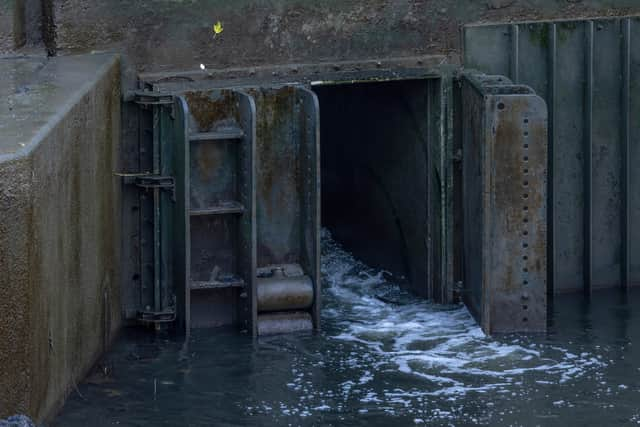Thames Water: Sewage works site has been discharging non-stop for 27 days - 484 hours and counting


Thames Water has been discharging contaminated water from one of its storm overflow sites, that could contain sewage, for over 400 hours since 20 October. Across 27 days the water firm has discharged from its Burghfield sewage works for 484 hours and 50 minutes non-stop into Clay Hill Brook, a tributary of the River Kennet.
Burghfield has seen discharges into Clay Hill Brook for 27 consecutive days. The figure is shown on its storm discharge map which shows near real-time storm discharge activity as indicated by its monitors. The map shows information about its Combined Sewer Overflows (CSOs), which are supposed to act as emergency valves during periods of “intense rainfall”. They enable water companies to discharge millions of litres of untreated sewage and wastewater into rivers and onto beaches - which they claim would otherwise overwhelm the sewerage system and flood houses.
Advertisement
Hide AdAdvertisement
Hide AdOn the social media platform X, formerly known as Twitter, Pete Devery questioned why sewage has been discharged from the works non-stop since 20 October. One user replied “the answer is greed” while another wrote “make me feel like having a poo in their corporate lobby”.
On its website Thames Water says that an upgrade is planned for its Burghfield site including "an increase in treatment capacity, as well as a higher quality of treated effluent going to the river". It added that the scheme " will reduce the need for untreated discharges" and expects the £17m project to be completed in 2026.
The water firm also states on its site that its monitors "are sensitive and can play up" so "when a monitor triggers, we can’t say that a certain section of the watercourse definitely contains sewage, or promise that it’s safe to swim in". The firm adds: "EDM doesn't confirm discharges, it only indicates them because the data received might not be accurate."


In recent analysis by the Liberal Democrats, the party found that Thames Water paid its CEOs £1.52m last year despite continuous sewage discharges and public uproar. They also paid this fat sum despite financial difficulties. In June contingency plans were being drawn up for the potential collapse of the water company because of its huge debt pile. Emergency plans were drawn up and the month after Thames Water shareholders agreed to provide a further £750m to save the company.
Advertisement
Hide AdAdvertisement
Hide AdOver the past week its customers have also faced issues with their water supplies with thousands left without any water for days on end after issues at the company’s Shalford treatment works. Around 20,000 people were without water on Sunday in the Godalming, Farncombe, Milford, Witley and Bramley areas. A customer affected by limited water supplies posted on the social media platform X, formerly known as Twitter, saying that they want “proper answers and accountability” from the firm and for it to “admit” that it is “blaming what was barely a downpour on this region for an issue caused by chronic under investment and reckless dumping of waste in our rivers.”
A Thames Water spokesperson said: “We’re the first company to provide live alerts for all untreated discharges throughout our region and this ‘near real-time’ data is available to customers as a map on our website and is also available through an open data platform for third parties, such as swimming and environmental groups, to use. We regard all discharges as unacceptable and we have published plans to upgrade over 250 of our sewage treatment works and sewers. We have a £17million upgrade planned for Burghfield to increase the site’s capacity, due to complete in 2026, and we’re also investigating the impact of groundwater on the sewer network in this area."
Comment Guidelines
National World encourages reader discussion on our stories. User feedback, insights and back-and-forth exchanges add a rich layer of context to reporting. Please review our Community Guidelines before commenting.
